13 December 2024
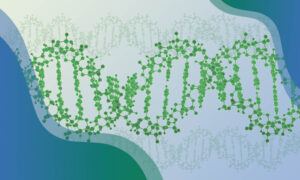
Right from the early days of DNA sequencing, EMBL’s scientists have been instrumental in helping the world understand, decode, archive, and manipulate genomes at scale and across many branches of the evolutionary tree, a task they continue to excel at today.
SCIENCE & TECHNOLOGY
9 May 2024

A study from the Hackett group at EMBL Rome led to the development of an epigenetic editing system that allows to precisely program chromatin modifications at any specific position in the genome, to understand their causal role in transcription regulation.
SCIENCE & TECHNOLOGY
18 July 2022
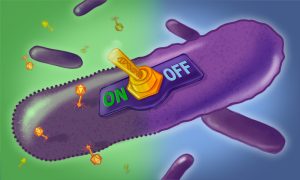
EMBL researchers now understand the function of an elusive small DNA in bacteria and have developed a tool that can be used to better understand what might ‘switch on’ bacterial immune defences.
SCIENCE & TECHNOLOGY
2022
sciencescience-technology
18 June 2021

After work in antimicrobial resistance, EMBL postdoc Laura Carroll is using machine learning for next-gen antibiotic development.
PEOPLE & PERSPECTIVES
2021
people-perspectivesscience
25 August 2020
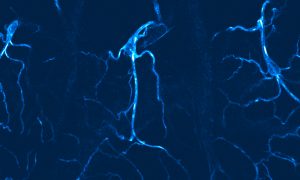
Beautiful flashes of blue colour help light the way for researchers to study cells in fruit fly larva that provide oxygen to tissues.
SCIENCE & TECHNOLOGY
2020
picture-of-the-weekscience-technology
5 August 2020

A global team of researchers including the Flicek Team at EMBL-EBI has partnered up with the Māori tribe Ngātiwai to sequence the genome of the tuatara, a rare reptile endemic to New Zealand.
SCIENCE & TECHNOLOGY
2020
sciencescience-technology
3 August 2020

The human genome harbours about 19 000 protein-coding genes, many of which still have no known function. As scientists unveil the secrets of our DNA, they come across novel genes that they need to refer to using a unique name. The Human Genome Organisation’s Gene Nomenclature Committee (HGNC) at…
SCIENCE & TECHNOLOGY
2020
sciencescience-technology
4 February 2019
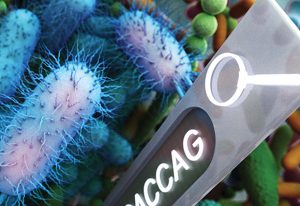
New search engine allows researchers to identify antibiotic resistance genes or mutations in real time
SCIENCE & TECHNOLOGY
2019
sciencescience-technology
3 February 2011
In our not-so-distant evolutionary past, stress often meant imminent danger, and the risk of blood loss, so part of our body’s stress response is to stock-pile blood-clotting factors. Scientists in the Molecular Medicine Partnership Unit (MMPU), a collaboration between the European Molecular…
SCIENCE & TECHNOLOGY
2011
sciencescience-technology
2 February 2011
A detailed analysis of data from 185 human genomes sequenced in the course of the 1000 Genomes Project, by scientists at the European Molecular Biology Laboratory (EMBL) in Heidelberg, Germany, in collaboration with researchers at the Wellcome Trust Sanger Institute in Cambridge, UK, as well as the…
SCIENCE & TECHNOLOGY
2011
sciencescience-technology
16 November 2010
The cells in the different parts of this video are always the same (grey), but, like actors using make-up to highlight different facial features, they have fluorescent labels that mark different cellular components in different colours: blue shows the nucleus, yellow shows tubulin (a component of…
SCIENCE & TECHNOLOGY
2010
sciencescience-technology
27 October 2010
The 1000 Genomes Project, a major international collaboration to build a detailed map of human genetic variation, has completed its pilot phase. The results are now published in the journal Nature and freely available through the European Molecular Biology Laboratory’s European Bioinformatics…
SCIENCE & TECHNOLOGY
2010
sciencescience-technology
18 March 2010
Once the human genome was sequenced in 2001, the hunt was on for the genes that make each of us unique. But scientists at the European Molecular Biology Laboratory (EMBL) in Heidelberg, Germany, and Yale and Stanford Universities in the USA, have found that we differ from each other mainly because…
SCIENCE & TECHNOLOGY
2010
sciencescience-technology
10 December 2009
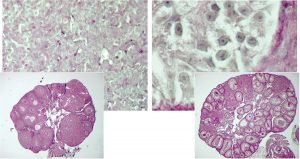
Is it a boy or a girl? Expecting parents may be accustomed to this question, but contrary to what they may think, the answer doesn’t depend solely on their child’s sex chromosomes. Scientists at the European Molecular Biology Laboratory (EMBL) in Heidelberg, Germany and the Medical Research…
SCIENCE & TECHNOLOGY
2009
sciencescience-technology
8 July 2007
Researchers from the European Molecular Biology Laboratory (EMBL) and the University of Michigan have discovered a gene that protects us against a serious kidney disease. In the current online issue of Nature Genetics they report that mutations in the gene cause nephronopthisis (NPHP) in humans and…
SCIENCE & TECHNOLOGY
2007
sciencescience-technology
27 September 2006
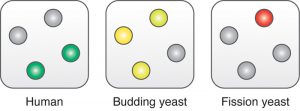
The life of a cell is all about growing and dividing at the right time. That is why the cell cycle is one of the most tightly regulated cellular processes. A control system with several layers adjusts when key components of the cell cycle machinery are produced, activated and degraded to make sure…
SCIENCE & TECHNOLOGY
2006
sciencescience-technology
16 February 2006
A detailed structural picture of a molecule that plays a key role in activating the Epstein Barr Virus in human cells has now been obtained by researchers at the European Molecular Biology Laboratory (EMBL) and the Institut de Virologie Moléculaire et Structurale (IVMS), associated with the…
SCIENCE & TECHNOLOGY
2006
sciencescience-technology
24 November 2005
Species evolve at very different rates, and the evolutionary line that produced humans seems to be among the slowest. The result, according to a new study by scientists at the European Molecular Biology Laboratory [EMBL], is that our species has retained characteristics of a very ancient ancestor…
SCIENCE & TECHNOLOGY
2005
sciencescience-technology
6 October 2005
Mutations in genes are the basis of evolution, so we owe our existence to them. Most mutations are harmful, however, because they cause cells to build defective proteins. So cells have evolved quality control mechanisms that recognize and counteract genetic mistakes. Now scientists of the Molecular…
SCIENCE & TECHNOLOGY
2005
sciencescience-technology
1 July 2005
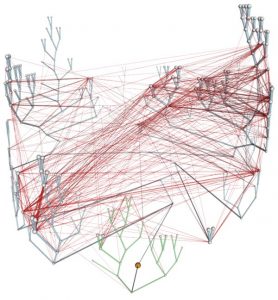
EBI researchers have changed our view of 4 billion years of microbial evolution. Christos Ouzounis and colleagues have gained intriguing quantitative insights into how gene families are transferred, not only ‘vertically’ through passage from one organism to its progeny, but also…
SCIENCE & TECHNOLOGY
2005
sciencescience-technology
No results found










